Disclaimer: Some links in this article may be affiliate links. These links may earn us a small commission, but rest assured, our reviews are unbiased and not influenced by these affiliations. Your trust is our priority, and we are committed to providing honest assessments of the products we recommend.
Welcome to our comprehensive guide to musical keyboards! Our team of musical virtuosos is here to provide you with valuable insights, tips, and guidance that will help you unleash your inner musician.
Musical keyboards are versatile electronic instruments that come in various types, each with its own unique features and capabilities. Whether you’re a beginner or an experienced musician, there’s a keyboard out there that’s perfect for you. Let us guide you through the world of musical keyboards.

Table of Contents
Key Takeaways
- Expert insights, tips, and guidance for choosing and using musical keyboards.
- Various types of musical keyboards are available, including acoustic pianos, digital piano keyboards, synthesizer keyboards, and MIDI keyboards.
- Differences between keyboard and synthesizer, and keyboard and piano.
- Key features to look for, including weighted keys, touch-sensitive keys, sound samples, and polyphony.
- Connectivity options and essential accessories for a complete musical experience.
What is a Musical Keyboard?
At the heart of music production, lies the versatile electronic instrument, the musical keyboard. As experts in the field, we can tell you that a musical keyboard typically consists of a row of keys, much like a piano, that when struck, produce a variety of musical notes. Musicians use the keyboard to play melodies, chords and harmonies to create beautiful music.

While the traditional piano keyboard design has been around for centuries, the musical keyboard has come a long way since then. With the advancement of technology, modern musical keyboards now come packed with an array of features, such as sound samples, digital effects and connectivity options, that make them a popular choice for musicians of all levels.
So, whether you’re a seasoned professional, or a beginner looking to unleash your inner musician, the musical keyboard is a fantastic tool to have in your arsenal. Keep reading to learn more about this incredible instrument, including its different types, features, and capabilities.
Types of Musical Keyboards
In this section, we will explore the various types of musical keyboards available in the market, each with its unique features, capabilities and sound.
Acoustic Pianos
Acoustic pianos are the traditional type of piano, consisting of 88 keys, hammers, and strings that produce sound when struck by the hammers. These pianos are revered for their rich, warm sound and responsive touch, making them a popular choice for classical music enthusiasts.

Digital Piano Keyboards
Digital piano keyboards are electronic pianos that simulate the sound and feel of an acoustic piano. These keyboards feature a weighted key action, producing a similar touch and response as an acoustic piano. They also have built-in speakers, effects, and the ability to connect to headphones for silent practice.
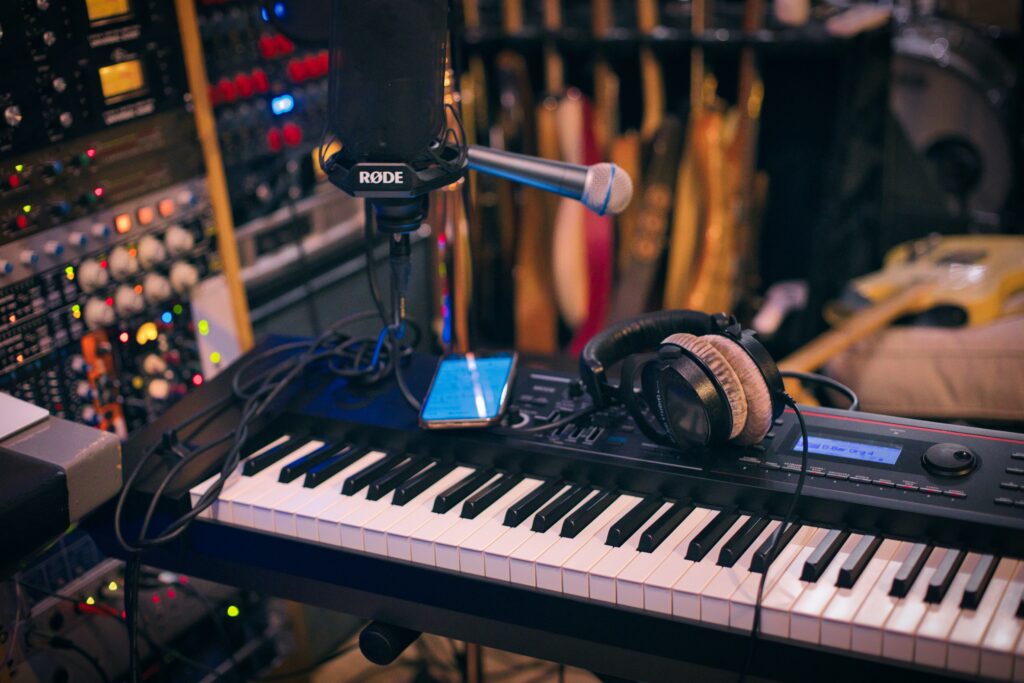
Synthesizer Keyboards
Synthesizer keyboards are highly versatile and can produce a wide range of sounds and effects that are not available in acoustic or digital pianos. These keyboards feature advanced sampling and sound manipulation technology, allowing for endless possibilities in sound creation and experimentation.
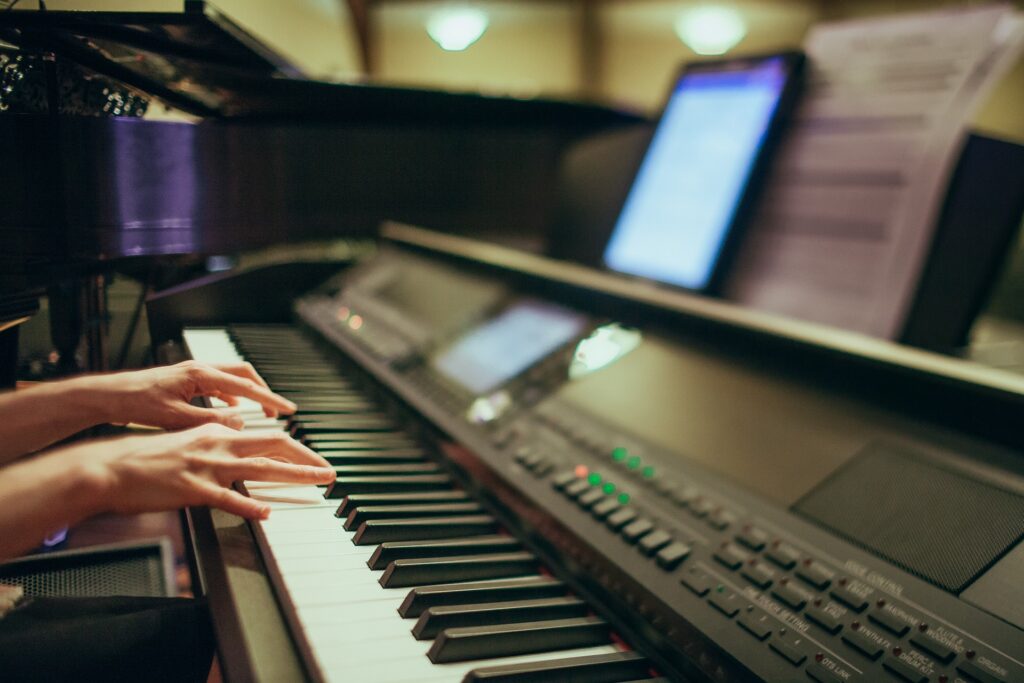
MIDI Keyboards
MIDI keyboards are used for controlling other digital instruments and software, such as music production software and virtual instruments. These keyboards do not produce sound on their own but instead transmit signals to other devices, allowing for easy recording and manipulation of music.
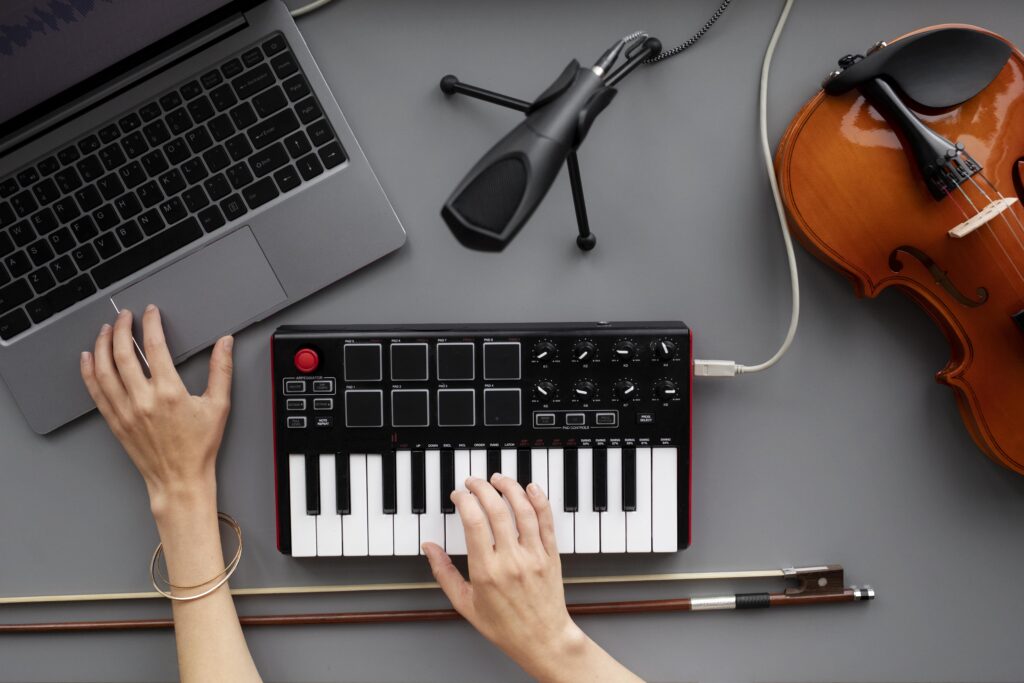
Arranger Keyboards
Arranger keyboards feature built-in backing tracks, styles, and rhythms, making them a popular choice for music performers and composers. They offer a range of pre-programmed accompaniments, allowing musicians to play along and create music with ease.
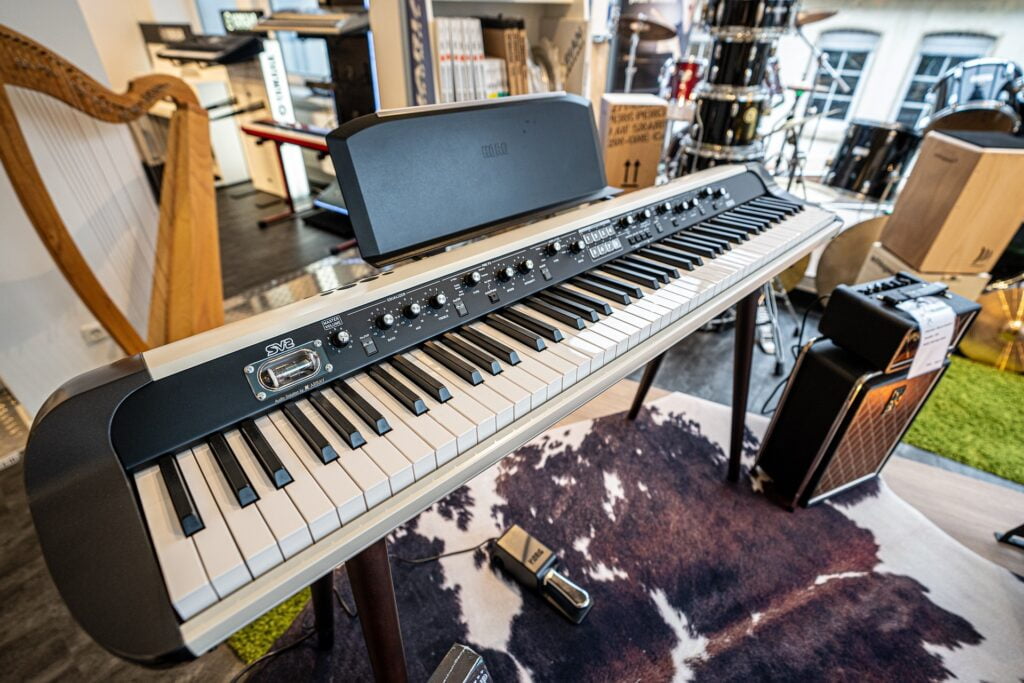
Understanding the different types of musical keyboards will help you make an informed decision when choosing the right instrument to suit your needs and preferences.
The Difference Between Keyboard and Synthesizer
Many music enthusiasts often get perplexed when it comes to choosing between a keyboard and a synthesizer. While both instruments have similar appearances, the functionalities and purposes differ significantly.
A keyboard is an electronic instrument with a row of keys, resembling a piano. The keys produce a variety of musical tones when played, allowing the musician to play melodies, chords, and harmonies. It comes in various types, such as acoustic pianos, digital piano keyboards, MIDI keyboards, and more. A keyboard is an ideal option for those who want to learn the basics of playing an instrument or those who want to play different styles of music with ease.

A synthesizer, on the other hand, is an electronic musical instrument that produces sound by generating electrical signals of different frequencies. It uses various sound synthesis techniques to manipulate and modify sound, allowing the musician to create new and unique soundscapes. A synthesizer is ideal for those who want to experiment with different sounds and create original pieces of music.
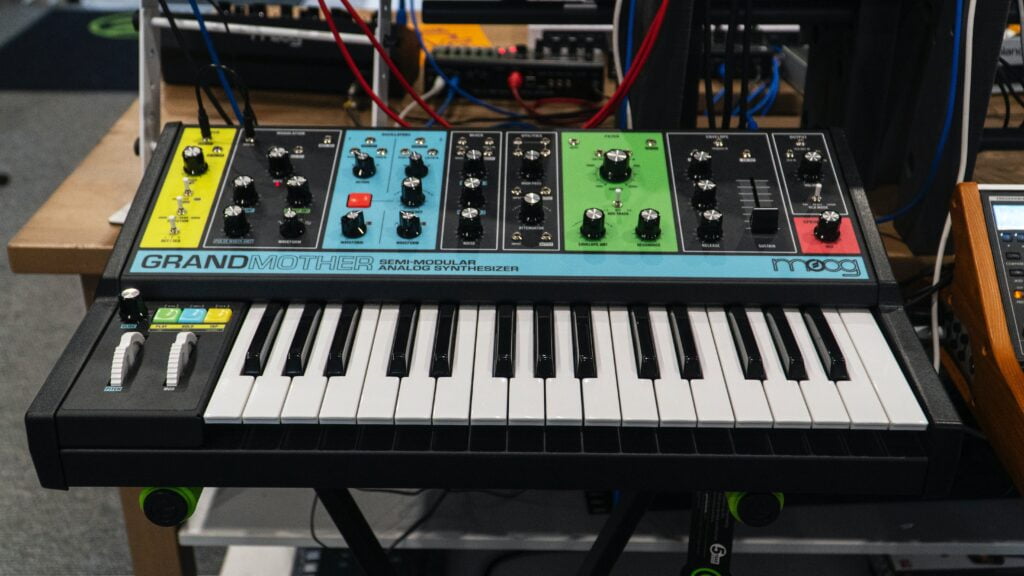
While a keyboard produces authentic sounds of traditional acoustic pianos, a synthesizer produces a wide range of sounds, including voices, strings, and percussion instruments. A keyboard is often used in live performances, while a synthesizer is commonly used in music production and studio recordings.
In conclusion, whether to choose a keyboard or a synthesizer solely depends on your personal preferences, musical goals, and budget. A keyboard helps you learn the basics of playing an instrument, while a synthesizer allows you to experiment with different sounds. Hope this clarifies the difference between keyboard and synthesizer.
Keyboard vs Piano: A Music Equipment Comparison
As musicians, we often find ourselves debating between two popular instruments – the keyboard and the piano. While they may seem similar in many ways, there are distinct differences that set them apart. Let’s explore the characteristics of each instrument in this music equipment comparison.
Similarities
Both the keyboard and the piano are keyboard instruments that operate on the same basic principles. They both have keys that when pressed, produce musical notes. The layout of the keys on the keyboard and the piano is also the same. Additionally, both instruments can produce a wide range of sounds.
Differences
One of the most significant differences between the keyboard and the piano is the way they produce sound. The piano uses hammers to strike strings, while the keyboard produces sound electronically through speakers. This difference affects the quality of sound each instrument produces. The piano has a more authentic, natural sound, while the keyboard can produce a wide range of sounds and effects.

Another notable difference is the size and weight of the instruments. The piano is much larger and heavier than a keyboard, making it harder to move around. Additionally, the keys on a piano are weighted, providing a more natural feel when playing. Most keyboards have lighter, non-weighted keys, which may not appeal to all pianists.
Cost is also a deciding factor for many musicians. Pianos tend to be more expensive than keyboards, with the most high-end models costing tens of thousands of rupees. Keyboards, on the other hand, are available at a much more affordable price point, with some models costing less than a few thousand rupees.
Advantages
Both the keyboard and the piano offer their unique advantages to musicians. Pianos are perfect for those who prefer traditional sounds and want to master the art of playing the piano. Keyboards, on the other hand, offer versatility and a range of features and effects that allow musicians to experiment with different genres and styles of music. Additionally, keyboards are portable and easy to move around, making them ideal for musicians who travel frequently.
Choosing between a keyboard and a piano ultimately comes down to personal preference and specific needs. Whether you’re a beginner or an experienced musician, a keyboard or a piano can be a rewarding instrument to play. Understanding the differences and advantages of each instrument can help you make an informed decision and choose the best one that fits your musical goals and preferences.
Understanding Key Features: Weighted Keys and Touch-Sensitive Keys
When it comes to buying a musical keyboard, it’s essential to understand the various features that affect your playing experience. Two key features to consider are weighted keys and touch-sensitive keys.
Weighted keys are designed to mimic the feel of a traditional piano, where the keys have some resistance when you press them down. This resistance gives you more control over the volume and dynamics of your playing, allowing you to create subtle variations in tone and expression. Weighted keys are especially important if you plan to use your keyboard to practice your piano technique or perform classical music.
Touch-sensitive keys, on the other hand, respond to the amount of pressure you apply to them. When you play harder, the volume and intensity of the sound will increase, while playing softly will produce quieter, milder tones. Touch-sensitive keys are ideal for creating expressive, dynamic performances, especially if you plan to play styles like jazz or pop.
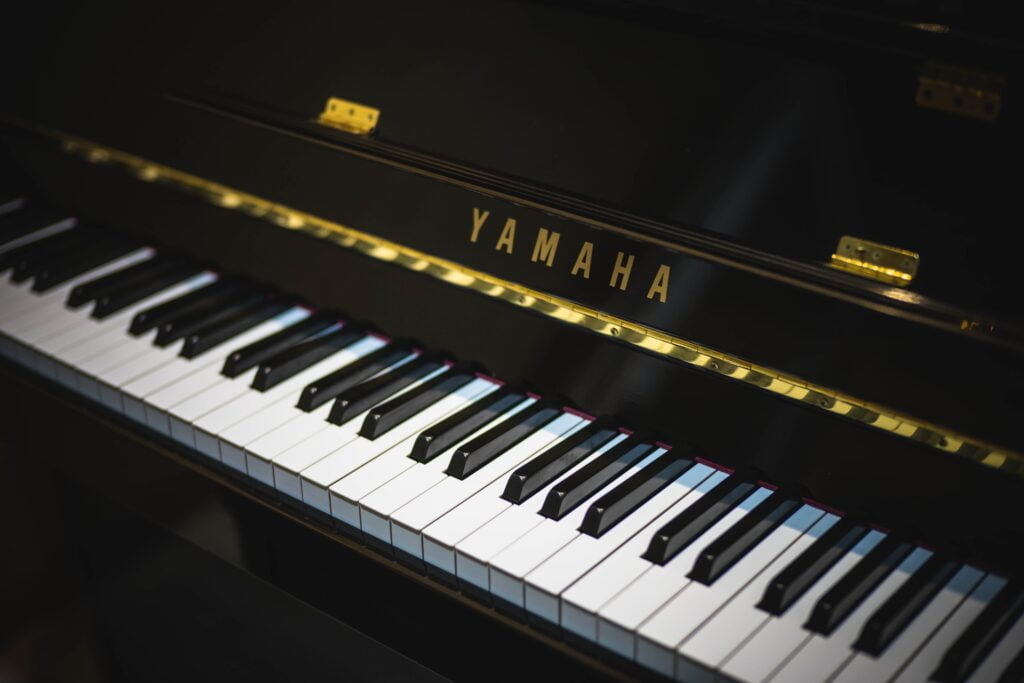
| Weighted Keys | Touch-Sensitive Keys |
| Resemble traditional piano keys with some resistance | Respond to the pressure you apply to them |
| Allow for more control over volume and dynamics | Ideal for creating expressive, dynamic performances |
| Best for practicing piano technique or classical music | Great for playing jazz or pop |
When choosing a keyboard, consider which key type will suit your playing style and the type of music you plan to play. Some keyboards have both weighted and touch-sensitive keys, giving you the best of both worlds. It’s also worth noting that not all weighted keys feel the same, with some manufacturers offering realistic, piano-like resistance and others offering a more subtle touch.
Overall, understanding the differences between weighted keys and touch-sensitive keys will help you make an informed decision when selecting a musical keyboard. Consider your preferences and the type of music you plan to play and choose the features that will enhance your playing experience.
Exploring Sound Samples and Polyphony
Sound samples and polyphony are two critical aspects to understand when selecting a musical keyboard that appeals to your musical preferences. Sound samples define the quality and authenticity of the sounds your instrument can produce. Polyphony refers to the number of individual notes a keyboard can play simultaneously.
For instance, if you’re an aspiring pianist, purchasing a keyboard with a high-quality piano sound sample is crucial as it will impact the accuracy of the sound produced. Similarly, if you’re exploring orchestral music, a keyboard with a range of sounds across various instruments is essential.
When selecting a musical keyboard, it’s important to confirm the number of polyphonic notes it can play simultaneously. High polyphony counts ensure a richer sound quality, allowing you to play multiple notes simultaneously without experiencing note dropouts.
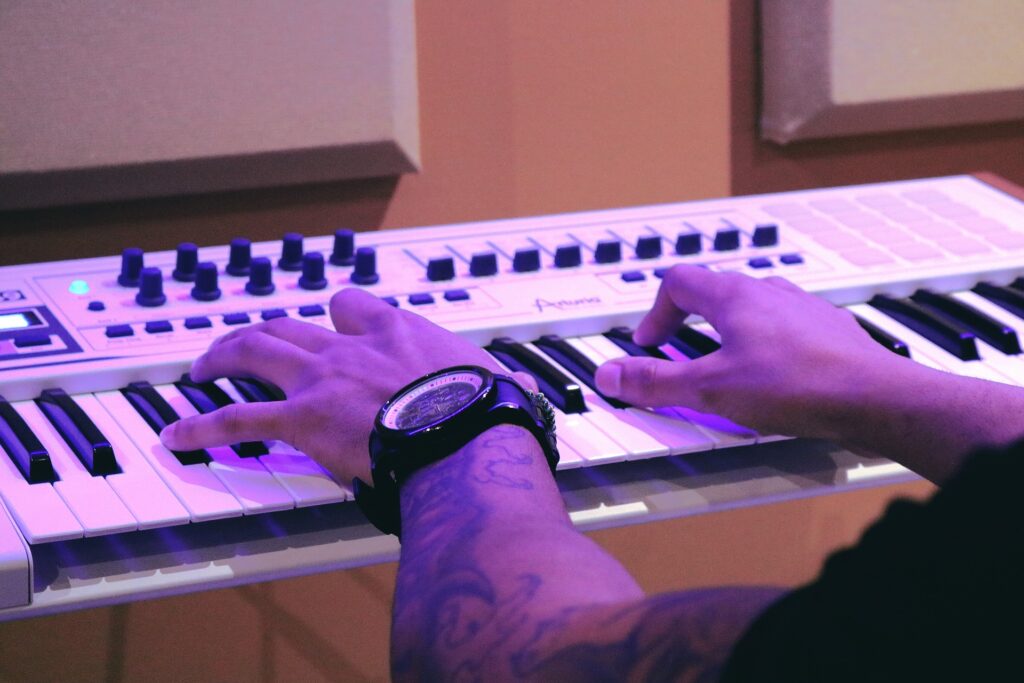
Sound Samples
| Sound Samples | Best For |
| Piano | Classical Music |
| Organ | Gospel/Religious Music |
| Strings | Orchestral Music |
| Drums and Percussion | Rhythmic Music |
A keyboard with weak or limited sound samples can limit your creativity and musical expression. However, a keyboard with a wide range of sound samples will enable you to experiment with different soundscapes, enhancing your musical experience.
Polyphony
Polyphony is an important aspect to consider when selecting a keyboard. It defines the number of notes that the keyboard can play simultaneously before dropping any of them. Higher polyphonic values ensure a smoother transition between notes and richer sound quality.
For instance, if you’re playing complex pieces with many notes, having a keyboard with at least 128 polyphonic notes is ideal. However, if you’re a beginner, a keyboard with 32 to 64 polyphonic notes is sufficient. Additionally, if you’re using your keyboard to create music, having sufficient polyphonic notes allows you to layer sounds, create harmonies, and add depth to your musical compositions.
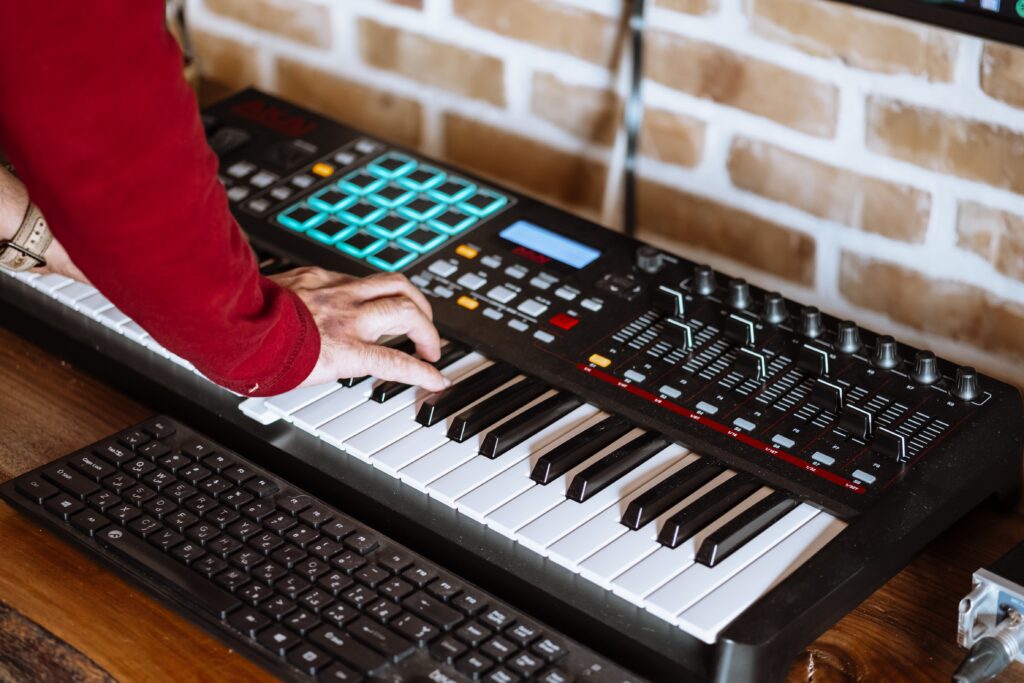
Understanding sound samples and polyphony is crucial when selecting a musical keyboard. Investing in a high-quality keyboard with a wide range of sound samples and polyphonic notes ensures that you can create authentic music that resonates with your taste and style.
Connectivity Options for Musical Keyboards
When it comes to modern musical keyboards, connectivity options are key. These features allow you to connect and integrate your keyboard with other devices and equipment, expanding your musical possibilities. Here are some of the connectivity options you might come across:
| Connectivity Option | Description |
| USB | A USB connection allows you to transfer data between your keyboard and other devices such as computers or smartphones. You might also use this connection to power your keyboard. |
| MIDI | MIDI (Musical Instrument Digital Interface) allows you to connect your keyboard to other MIDI-enabled devices such as sound modules, drum machines, or sequencers. This connection allows you to record and playback your music more easily. |
| Aux In/Out | Auxiliary inputs and outputs are often found on digital keyboards. These connections allow you to plug in external audio sources such as MP3 players or connect to external speakers or mixers for live performances. |
Other connectivity options might include headphone jacks, pedal inputs for sustain or expression pedals, and Bluetooth connectivity for wireless operation.
When shopping for a musical keyboard, consider what connectivity options you might need, depending on your musical goals and how you plan to use your instrument. With the right connections, you can unlock endless possibilities for creativity and musical expression.
Essential Accessories for Musical Keyboards
When it comes to playing the musical keyboard, having the right accessories is essential for comfort and optimal performance. Here are some must-have accessories to consider:
Keyboard Stand
A keyboard stand provides a sturdy base for your musical keyboard, allowing you to adjust the height and angle to suit your playing style and posture. A good quality stand can help prevent strain on your back, shoulders, and neck, ensuring that you can play comfortably for extended periods.
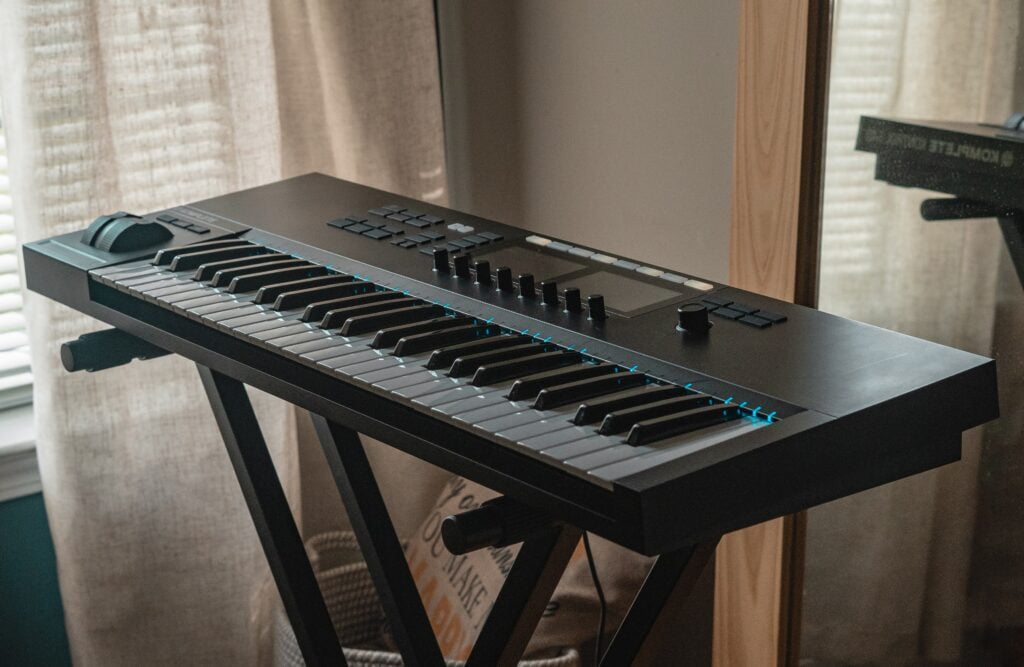
Piano Bench
A piano bench has a padded seat that helps you sit comfortably while playing the keyboard. The height can be adjusted to ensure that your arms and hands are in the correct position, providing maximum support for your back and posture. A bench can also add a touch of elegance to your keyboard setup.
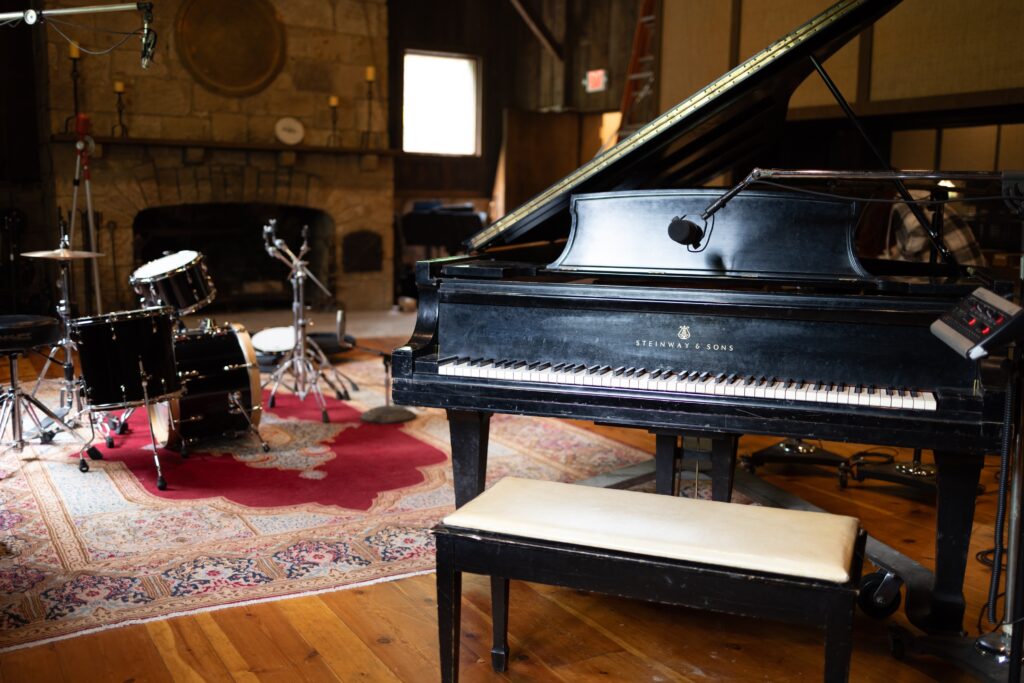
Sustain Pedal
A sustain pedal is an essential accessory that allows you to sustain notes and chords for a longer period, creating a smooth and seamless sound. It’s ideal for playing pieces that require a sustained sound, such as ballads and classical music. With a sustain pedal, you can add depth and emotion to your performance.

Investing in these essential accessories can help you take your musical keyboard playing to the next level. Not only do they enhance your performance, but they also provide comfort and support, allowing you to play for longer without any discomfort.
Cleaning Tips for Your Musical Keyboard
Proper maintenance and cleaning of your musical keyboard is crucial for its longevity and optimal performance. Here are some cleaning tips that we recommend:
- Turn off and unplug the keyboard: Before cleaning your keyboard, make sure it is turned off and unplugged from any power sources. This will eliminate any risk of electric shock.
- Use a soft cloth: When cleaning your keyboard, always use a soft, lint-free cloth. Avoid using abrasive materials that can scratch or damage the surface of the keys.
- Avoid using water: Water can seep into the keyboard and cause damage to the internal electronics. Instead, use a dry cloth or a special cleaning solution designed for musical keyboards.
- Clean the keys: Gently wipe the keys with the cloth to remove any dust, dirt, or fingerprints. For stubborn stains, you can use a small amount of cleaning solution on the cloth, but make sure it is not too wet.
- Clean the exterior: Wipe down the exterior of the keyboard, including the body and any buttons or knobs. Be careful not to press too hard or use excessive force, as this can damage the keys or other components.
- Protect from dust: When not in use, cover your keyboard with a dust cover or cloth to protect it from dust and debris.
- Keep it dry: It’s important to keep your keyboard in a dry and cool environment. Avoid exposing it to extreme temperatures or humidity levels.
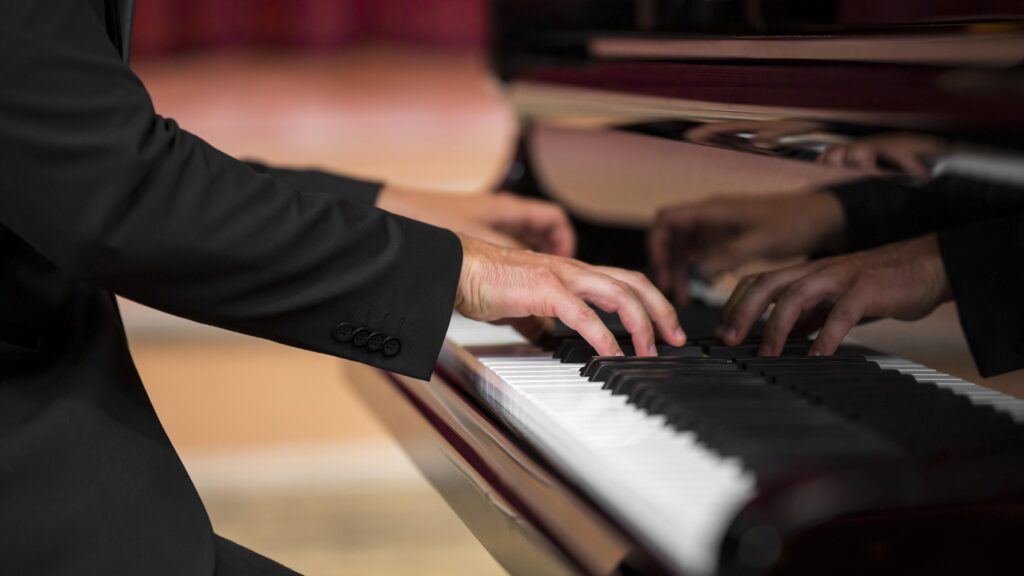
Remember, taking good care of your musical keyboard will not only ensure its longevity but also enhance your playing experience. Make sure to clean it regularly to keep it in top shape and sounding its best.
Tuning Guide for Musical Keyboards
As with any musical instrument, tuning your keyboard is an essential part of maintaining optimal sound quality. Here’s a step-by-step guide to help you tune your keyboard:
- Start by turning on your keyboard and selecting the piano sound.
- Play the middle C key (the 4th white key from the left of a group of two black keys) and hold it down.
- Use an electronic tuner or tuning app to check if the note is in tune. If it’s not, adjust the pitch using the keyboard’s tuning settings.
- Repeat this process for the remaining white and black keys, working your way up and down the keyboard.
- Once you’ve tuned all the keys, play a few simple melodies to ensure that everything sounds in tune.
- Remember to tune your keyboard regularly, especially if you’ve moved it or if the temperature or humidity has changed.

By following these simple steps, you can ensure that your musical keyboard sounds as good as new every time you play it.
Remember, tuning your keyboard is just one aspect of keeping it in top condition. Regular cleaning and maintenance can also help extend its lifespan and keep it sounding great for years to come.
Exploring Popular Musical Keyboard Brands
When it comes to musical keyboards, there are several reputable brands that produce high-quality instruments. Some of the most popular keyboard brands are Yamaha, Roland, Casio, Korg, and Nord. Let’s explore each of these brands in detail:
| Brand | Key Features |
| Yamaha Keyboard | Yamaha keyboards are known for their versatility, portability, and cutting-edge technology. They offer a wide range of keyboard types, from entry-level portable keyboards to high-end digital pianos and workstations. Yamaha keyboards are also known for their realistic sound samples and high-quality keys, making them a popular choice among musicians of all skill levels. |
| Roland Keyboard | Roland keyboards are renowned for their innovative features, sturdy build quality, and exceptional sound quality. They offer a range of keyboard types, including synthesizers, digital pianos, and workstations, all of which are equipped with the latest technology and high-quality sound samples. Roland keyboards are also known for their extensive connectivity options, making them an ideal choice for both home and stage use. |
| Casio Keyboard | Casio keyboards are popular among beginners and intermediate players for their affordability, portability, and user-friendly features. They offer a range of keyboard types, including digital pianos, synthesizers, and portable keyboards, all of which are equipped with a variety of sound samples, rhythms, and tones. Casio keyboards are also known for their durability and compact design, making them an excellent choice for musicians on the go. |
| Korg Keyboard | Korg keyboards are known for their cutting-edge technology, exceptional sound quality, and versatile features. They offer a range of keyboard types, including digital pianos, synthesizers, and workstations, all of which are equipped with high-quality sound samples and extensive editing capabilities. Korg keyboards are also known for their user-friendly interface and intuitive controls, making them an ideal choice for musicians of all skill levels. |
| Nord Keyboard | Nord keyboards are renowned for their exceptional sound quality, advanced features, and professional-grade build quality. They offer a range of keyboard types, including stage pianos and synthesizers, all of which are equipped with a variety of sound samples, effects, and features. Nord keyboards are also known for their sturdy build, stylish design, and performance-oriented features, making them a popular choice among professional musicians. |
No matter which brand you choose, it’s essential to select a keyboard that suits your skill level, musical preferences, and budget. Explore the different options, read reviews, and don’t be afraid to ask for advice from experienced musicians. With the right keyboard, you’ll be able to unleash your inner musician and create beautiful music that resonates with your soul.
Unleash Your Creativity: Tips for Playing the Musical Keyboard
Playing the musical keyboard is not just about hitting the keys. It’s about expressing your creativity and emotions through the beautiful sound of music. As experts in the industry, we’d like to share some valuable tips to help you improve your playing technique, develop your own style, and make the most of your musical journey.
Firstly, it’s essential to practice regularly. Dedicate some time each day to play your musical keyboard, even if it’s just for a few minutes. Consistency is key in developing your skills and mastering your instrument.
Secondly, experiment with different sounds and tones. Get to know the various presets and options available on your keyboard and try them out. This not only helps you understand your instrument better but can also inspire new ideas and styles.
Thirdly, be mindful of your posture and technique. Maintaining good posture and hand positioning not only reduces the risk of injury but also improves your playing accuracy and speed.
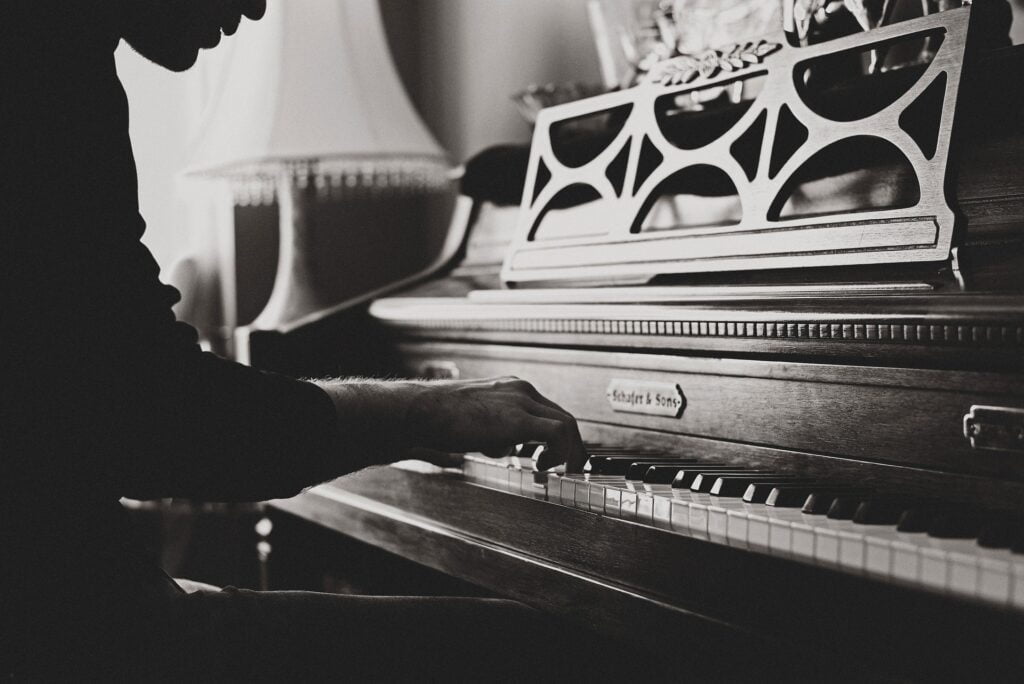
Fourthly, take advantage of online resources and tutorials. There are plenty of online videos and courses available that can help you further develop your skills and provide you with new ideas and inspiration.
Fifthly, don’t be afraid to make mistakes. Remember, every musician has to start somewhere, and mistakes are a natural part of the learning process. Embrace them, learn from them, and use them to improve your playing.
Finally, have fun! Playing the musical keyboard should be an enjoyable experience that brings you joy and fulfilment. So, get creative, experiment, and let your inner musician shine!
Get Started: Setting Up Your Musical Keyboard
Now that you have chosen the perfect musical keyboard for your needs, it’s time to set it up for optimal performance. Our expert insights, tips, and guidance will help you through the process.
First, find a suitable location for your keyboard. Choose a well-lit and ventilated area, away from direct sunlight and moisture. Ensure that you have access to a power outlet and sufficient space to accommodate your keyboard and any accessories.
Next, assemble any accessories you may have, such as a keyboard stand, piano bench, or sustain pedal. Follow the manufacturer’s instructions carefully and make sure that everything is securely attached and stable.
Connect your keyboard to power and turn it on. Familiarise yourself with the keyboard’s controls, including the volume, tone, and rhythm settings. Adjust them to your liking and experiment with different combinations of sounds and effects.

Now it’s time to position yourself in front of the keyboard. Sit comfortably on your piano bench, with your feet flat on the ground and your back straight. Ensure that your hands are level with the keyboard and that your wrists are not strained or tense.
Finally, adjust the keyboard’s height and angle for optimal playing comfort. You may need to raise or lower the keyboard stand or adjust the height of the bench. Get someone to help you if necessary to ensure that everything is at the perfect height and angle.
With your keyboard set up correctly, you’re now ready to start playing and exploring your musical creativity. Remember, practice and patience are key to becoming an accomplished musician. Our tips and guidance will help you unleash your inner musician and discover all that your new musical keyboard has to offer.
Choosing the Right Musical Keyboard for You
Now that you’ve gained insight into the different types, features, and brands of musical keyboards, it’s time to select the perfect one for you. Our team of experts has compiled some tips and guidance to help you make an informed decision.
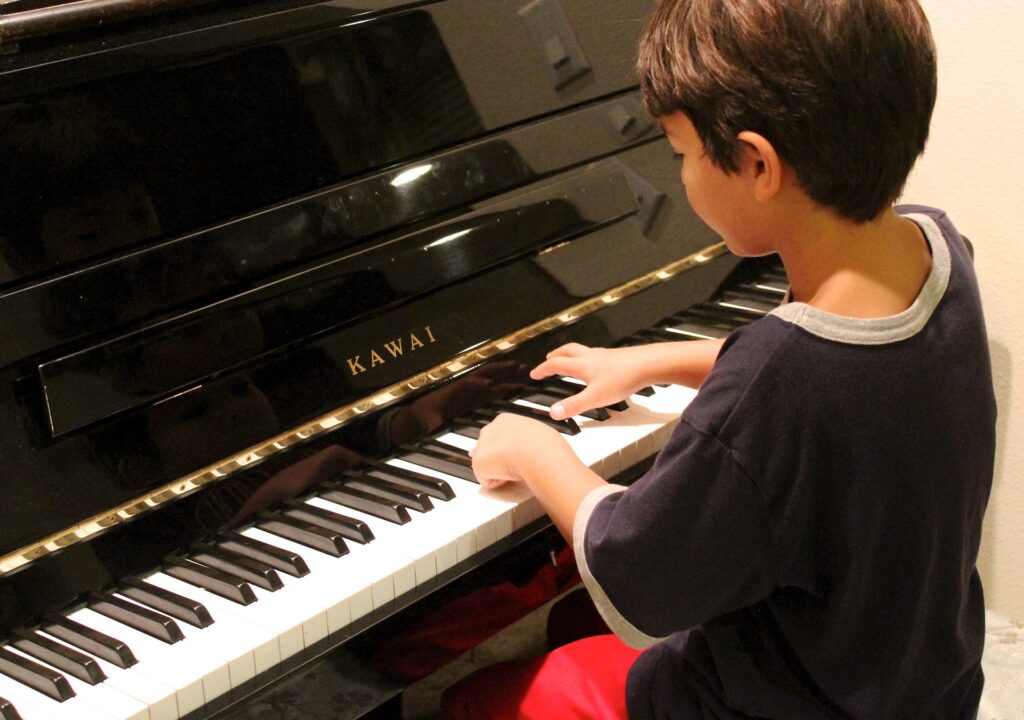
- Consider your skill level: If you’re a beginner, look for a keyboard that is user-friendly and has basic features. As you progress, you can upgrade to a more advanced keyboard with additional features.
- Think about your musical preferences: Do you want to play classical music, jazz, or pop? Different musical styles require different features, so choose a keyboard that caters to your preferred genre.
- Set a budget: Musical keyboards come in a wide range of prices. Determine how much you’re willing to spend and look for keyboards that meet your requirements within your budget.
- Try before you buy: It’s essential to test the keyboard before purchasing. Visit a music store and try out different keyboards to get a feel for the features and functionalities. Play a few pieces to see how the keyboard responds.
- Read reviews: Check online reviews and ratings from other musicians who have used the keyboard you’re interested in. This will give you a good idea of its pros and cons.
Choosing the right musical keyboard may seem overwhelming, but with our expert insights, tips, and guidance, you can confidently select the perfect instrument for your needs. Remember, the right keyboard can make all the difference in unlocking your full potential as a musician.
Conclusion
We hope this comprehensive guide on musical keyboards has provided you with valuable insights and expert tips to help you unleash your inner musician. From understanding the different types of keyboards to exploring their features and functionalities, we have covered everything you need to know to make an informed decision when choosing the perfect keyboard for your musical journey.
Remember, whether you’re a beginner or an experienced musician, practice and dedication are key to unlocking your full potential. So, don’t be afraid to experiment, explore your creativity, and let your passion for music shine through.

Before we wrap up, we want to remind you of the importance of proper maintenance and cleaning of your musical keyboard. Regular tuning, cleaning, and upkeep will ensure your instrument remains in top shape and offers optimal performance.
Thank you for reading, and we wish you all the best in your musical endeavours!
Frequently Asked Questions
What is a musical keyboard?
A musical keyboard is a versatile electronic instrument that consists of a row of keys, typically resembling those found on a piano. These keys produce a variety of musical tones when pressed, allowing musicians to play melodies, chords, and harmonies.
What are the different types of musical keyboards?
Musical keyboards come in various types, including acoustic pianos, digital piano keyboards, synthesizer keyboards, MIDI keyboards, and more. Each type has its own unique features and capabilities.
What is the difference between a keyboard and a synthesizer?
While both keyboard and synthesizer can produce music, they have distinct functionalities and purposes. A keyboard typically has a wide range of sounds and instruments, while a synthesizer allows for more customization and sound manipulation.
How does a keyboard compare to a piano?
A keyboard and a piano have similarities and differences. While a keyboard is more portable and versatile, a piano offers a more authentic and expressive playing experience. The choice between the two depends on your musical needs and preferences.
What are weighted keys and touch-sensitive keys?
Weighted keys provide resistance when pressed, mimicking the feel of a traditional piano. Touch-sensitive keys respond to the force applied, allowing for dynamic playing. These features enhance the playing experience and mimic the feel of acoustic instruments.
What are sound samples and polyphony in a musical keyboard?
Sound samples refer to the recorded sounds of various instruments that a keyboard can reproduce. Polyphony refers to the number of individual notes a keyboard can produce simultaneously. Both features contribute to the quality and versatility of the keyboard’s sound.
What are the connectivity options for musical keyboards?
Modern musical keyboards offer various connectivity options, including USB connections and MIDI ports. These options allow you to connect and integrate with other devices and equipment, enhancing your musical experience.
What are some essential accessories for a musical keyboard?
Essential accessories for a musical keyboard include keyboard stands, piano benches, and sustain pedals. These accessories enhance your playing experience and ensure comfort while performing.
How do I clean my musical keyboard?
Proper maintenance and cleaning are important for the longevity and optimal performance of your musical keyboard. Use a soft cloth or brush to remove dust and debris, and avoid using liquid cleaners directly on the keys or control panels.
How do I tune my musical keyboard?
Keeping your musical keyboard in tune ensures accurate and pleasing sound quality. Consult the user manual or seek professional assistance to learn how to tune your specific keyboard model.
What are some popular musical keyboard brands?
Popular musical keyboard brands include Yamaha, Roland, Casio, Korg, and Nord. These brands are known for producing high-quality keyboards with a range of options for musicians.
Do you have any tips for playing the musical keyboard?
Yes! Playing the musical keyboard is an opportunity to express your creativity. Practice regularly, experiment with different styles and techniques, and don’t be afraid to make mistakes. Developing your own style and enjoying the process will help you improve as a musician.
How do I set up my musical keyboard?
Properly setting up your musical keyboard is crucial for a comfortable and enjoyable playing experience. Follow the manufacturer’s instructions for placement, connection, and positioning to optimise your comfort and performance.
How do I choose the right musical keyboard for me?
With a wide range of musical keyboards available, choosing the right one can be overwhelming. Consider your skill level, musical preferences, and budget. Research different models, read reviews, and consult with experts to find the perfect musical keyboard for your needs.
Disclaimer: Some links in this article may be affiliate links. These links may earn us a small commission, but rest assured, our reviews are unbiased and not influenced by these affiliations. Your trust is our priority, and we are committed to providing honest assessments of the products we recommend.